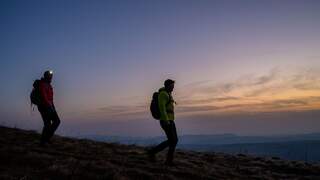When the sun takes its daily dip below the horizon and night falls, there’s no rule saying you have to stay inside for the evening. Anyone who has gone for a walk in the dark will know that night time is full of subtle shades of light, capable of inspiring a sense of reconnection and wonder. Walking at night can feel like discovering a new world on your doorstep, one that allows you to roam beyond the duration of winter’s short days.
Walking at night can pose new challenges, but with the right kit and preparation it can open up a whole new aspect to your walking. So, if you’re looking to extend your daily window of time for getting outdoors, here’s some inspiration and information to get you started on your after-dark adventures.







